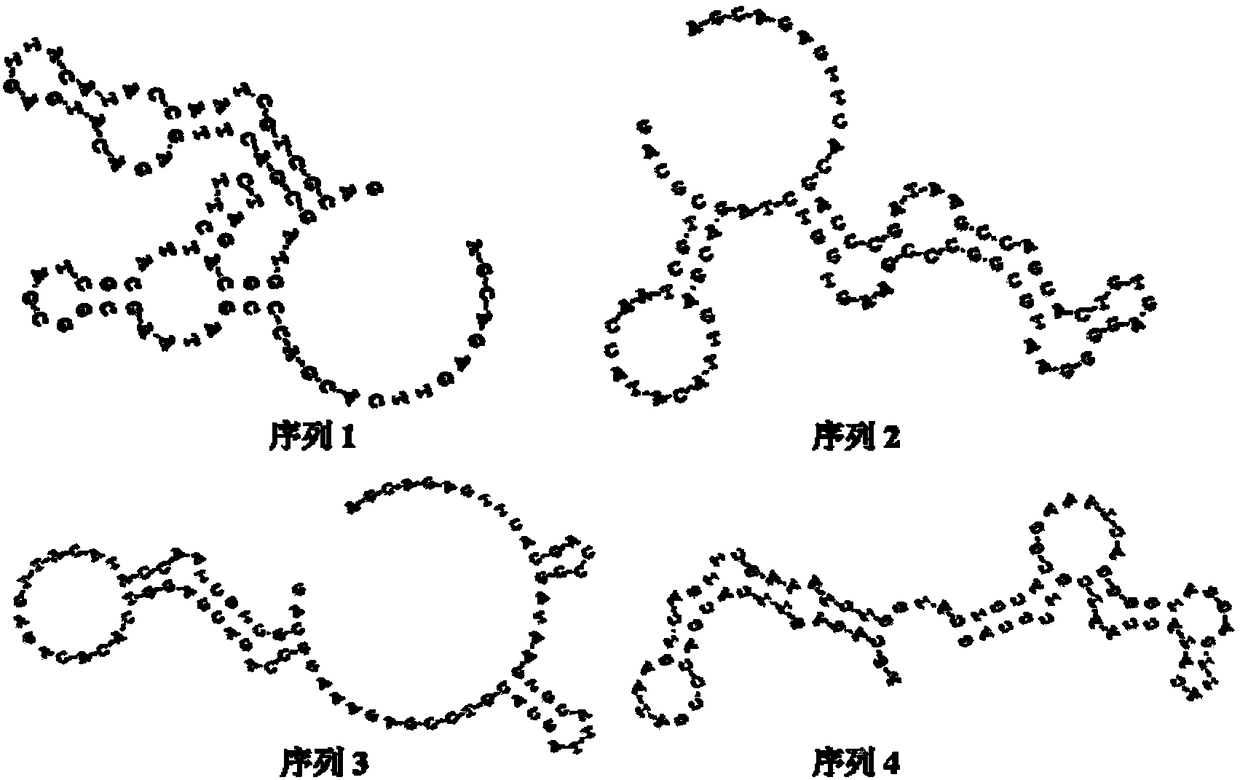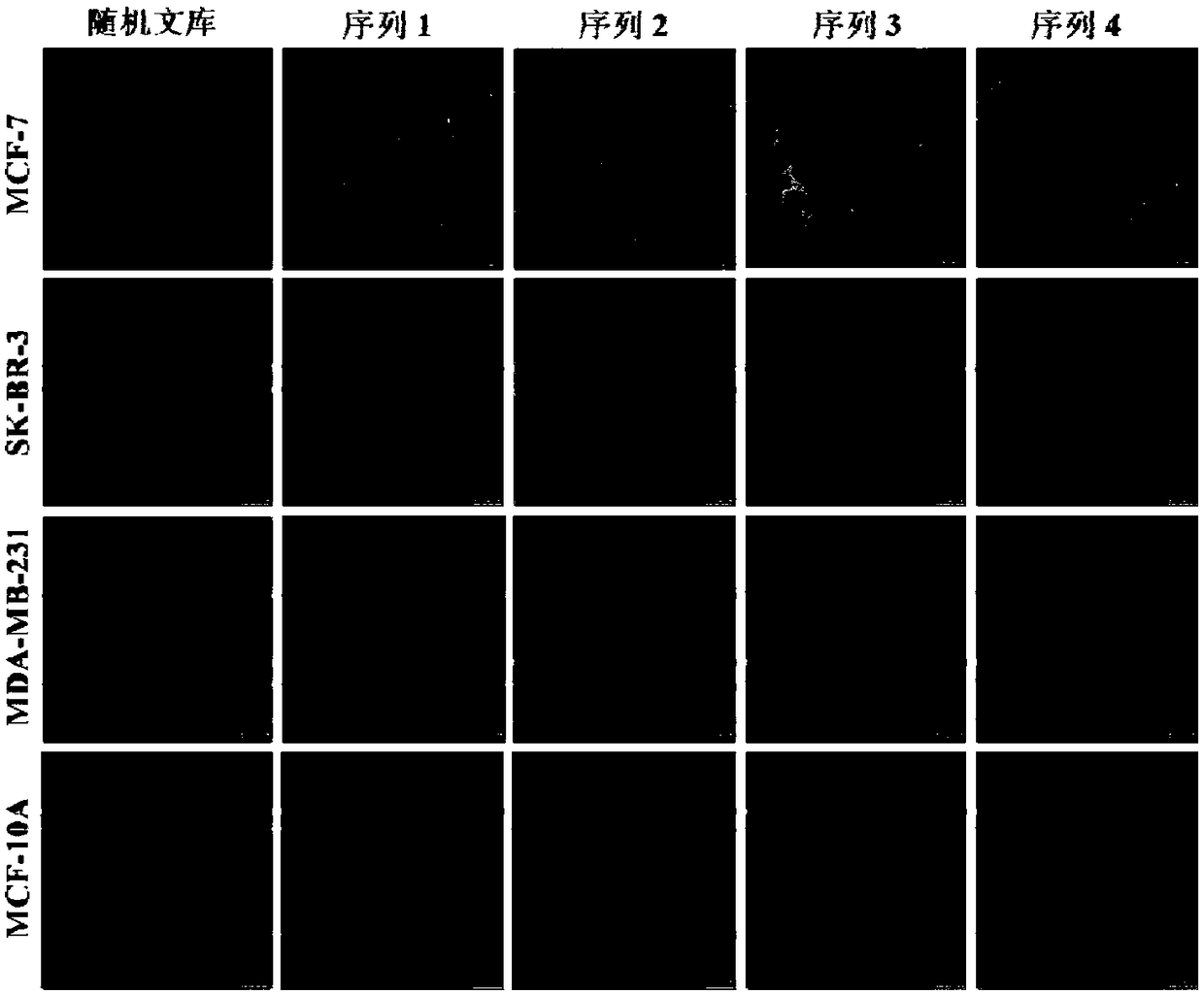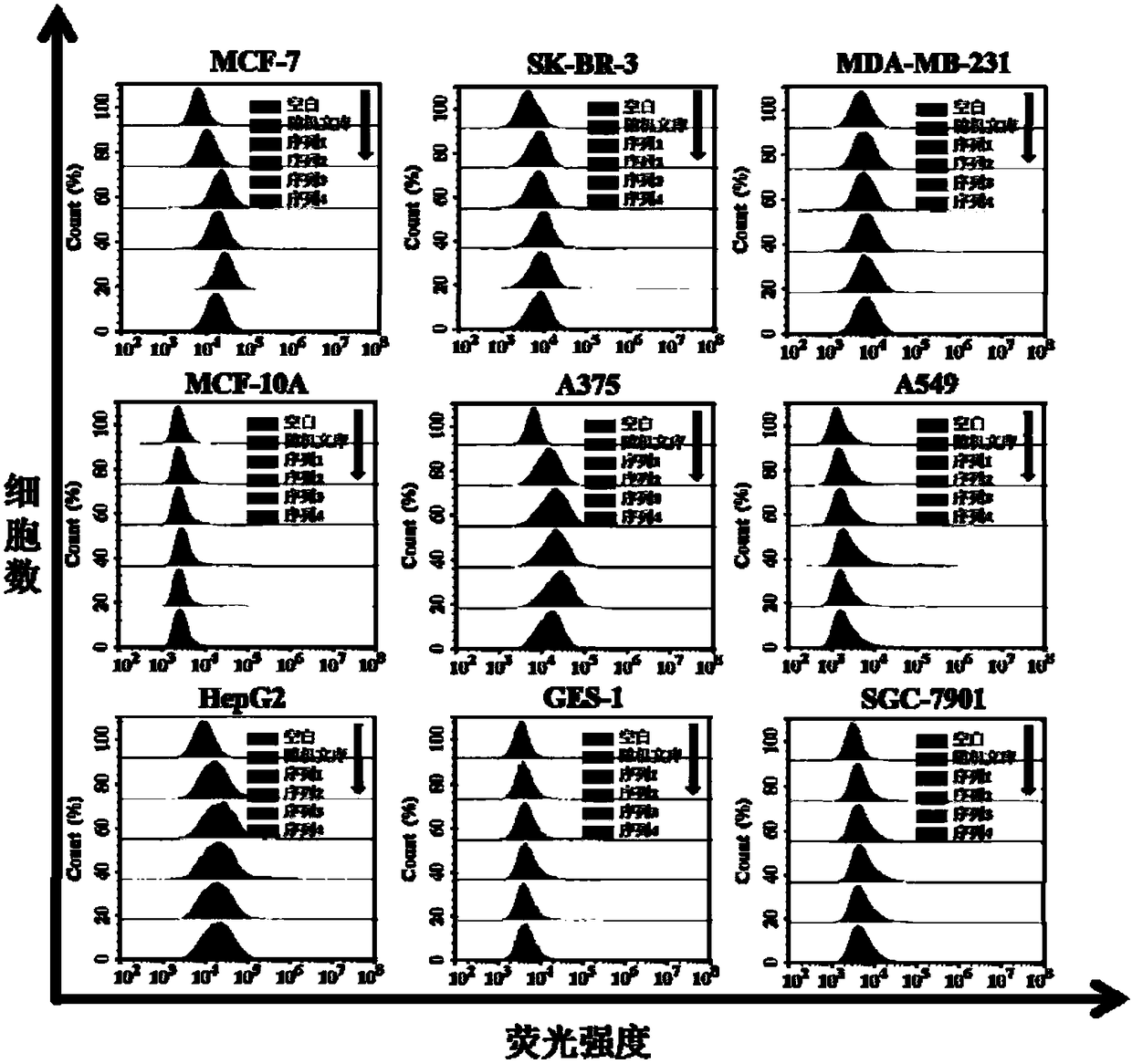DNA aptamer specifically combined with human breast cancer cells MCF-7 and application thereof
A technology of human breast cancer cells and nucleic acid aptamers, which is applied in the fields of biomedicine and clinical medicine, can solve the problem that the sensitivity speed cannot meet the requirements of rapid diagnosis of breast cancer, and achieve non-immunogenicity, small molecular weight, easy retouching effect
- Summary
- Abstract
- Description
- Claims
- Application Information
AI Technical Summary
Problems solved by technology
Method used
Image
Examples
Embodiment 1
[0031] Example 1: Screening of human breast cancer cell line MCF-7 specific nucleic acid aptamers
[0032] Design and synthesize the following single-stranded DNA libraries and primer sequences:
[0033] Random ssDNA library: (N40 represents 40 random bases)
[0034] 5'-AGCAGAGTTCACGACCCGATAAG-N40-GAGTTACATACCAATCGTCGCAG-3'
[0035] Upstream primer: 5'-FAM-AGCAGAGTTCACGACCCGATAAG-3'
[0036] Downstream primer: 5'-biotin-CTGCGACGATTGGTATGTAACTC-3'
[0037] 1. Obtain the specific nucleic acid aptamer of human breast cancer cell line MCF-7 by Cell-SELEX:
[0038] 2.1 Cell culture: use 1640 incomplete medium plus 10% fetal bovine serum to cultivate human breast cancer cells MCF-7 and SK-BR-3; DMEN plus 10% fetal bovine serum to cultivate human breast cancer cells MDA-MB-231; MEGM Add 100ng / ml cholera toxin to culture human normal breast epithelial cells MCF-10A. All cells were kept at 37°C, 5% CO2 cultivated under conditions.
[0039] 2.2 Cell pretreatment before screening: ...
Embodiment 2
[0048] Example 2: Investigation of the secondary structure, specificity, affinity and dissociation constant of four nucleic acid aptamers
[0049] A human breast cancer cell line MCF-7-specific nucleic acid aptamer, in this embodiment, the nucleic acid aptamer mainly includes any one DNA sequence in the following four nucleotide sequences modified by FAM at the 5' end:
[0050] Sequence 1:
[0051] 5'-AGCAGAGTTCACGACCCGATAAGCGGCGATCGCATTCTTCTAGACGGTAGCGACTTGAGACATGAGTTACATACCAATCGTCGCAG-3'
[0052] Sequence 2:
[0053] 5'-AGCAGAGTTCACGACCCGATAAGCCAGCACTGTGAGGGGAATGCGGCCCGAAGTGGTCTAGACGAGTTACATACCAATCGTCGCAG-3'
[0054] Sequence 3:
[0055] 5'-AGCAGAGTTCACGACCCGATAAGTGCATTAGCACGTCCGAGAAAGGCCAGACGAGGTCACACAGAGTTACATACCAATCGTCGCAG-3'
[0056] Sequence 4:
[0057] 5'-AGCAGAGTTCACGACCCGATAAGTCAGTTCGAAATCTGGTACTGCACGGAAATCAGGGGTAGGAGTTACATACCAATCGTCGCAG-3'
[0058] 1. Use DNAMAN software to simulate the secondary structure of the above four nucleic acid aptamers, the results a...
Embodiment 3
[0068] Example 3: Application of nucleic acid aptamer-based fluorescent sensor in the detection of human breast cancer cell MCF-7
[0069] Since sequence 3 has the best specificity among the four nucleic acid aptamer sequences (such as image 3), so this embodiment takes Sequence 3 as an example to construct a fluorescent sensor based on nucleic acid aptamer for in vitro detection of human breast cancer cell MCF-7. First, modify the Biotin molecule and the TAMRA quencher group at the 3' end and 5' end of sequence 3, respectively, and design a 16-base-long modified FAM fluorescent group that is complementary to the 5' end of the nucleic acid aptamer. The nucleic acid sequence was used as a reporter probe (Probe: 5'-FAM-GGTCGTGAACTCTGCT-3'). Before detection, the nucleic acid aptamer is hybridized with the reporter probe to form a complex Aptamer-Probe. At this time, the fluorescent signal cannot be generated because the FAM fluorescent group and the TAMRA quencher group are cl...
PUM
 Login to View More
Login to View More Abstract
Description
Claims
Application Information
 Login to View More
Login to View More - R&D
- Intellectual Property
- Life Sciences
- Materials
- Tech Scout
- Unparalleled Data Quality
- Higher Quality Content
- 60% Fewer Hallucinations
Browse by: Latest US Patents, China's latest patents, Technical Efficacy Thesaurus, Application Domain, Technology Topic, Popular Technical Reports.
© 2025 PatSnap. All rights reserved.Legal|Privacy policy|Modern Slavery Act Transparency Statement|Sitemap|About US| Contact US: help@patsnap.com



